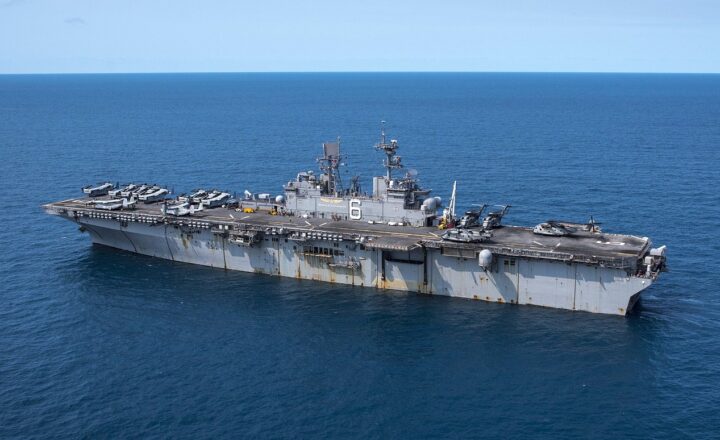How International Treaties Regulate the Use of Land, Air, and Sea Forces
November 16, 2024

International relations and global peace are often maintained through an intricate web of treaties and agreements that govern the use of land, air, and sea forces by nations. These treaties aim to ensure mutual understanding, prevent conflicts, and establish protocols for military engagement. In this article, we’ll explore how international treaties regulate military forces and their implications for global security.
1. The Importance of International Treaties
The significance of international treaties lies in their power to create legally binding obligations for states. They facilitate cooperation and understanding in an increasingly interconnected world. Military treaties serve several core functions:
- Establishing Rules of Engagement: They define acceptable behavior during conflicts and guide the conduct of military operations, assisting states in navigating complex wartime scenarios.
- Deterrence of Aggression: By instituting strict protocols regarding force usage, these treaties deter potential aggressors from launching military actions or escalating conflicts.
- Promoting Peaceful Resolution: Treaty frameworks often encourage dialogue and negotiation, reducing the likelihood of military engagements and fostering diplomatic solutions.
Understanding the importance of these treaties is crucial as they shape global security dynamics in the modern world.
2. Key Treaties Governing Military Forces
Numerous treaties exist that govern the operations of land, air, and sea forces. Here are some of the most prominent treaties and agreements:
2.1 The Geneva Conventions
The Geneva Conventions, established in 1864 and revised multiple times, comprise four treaties that establish international legal standards for humanitarian treatment in war. They address the responsibilities of warring nations towards each other and civilians, emphasizing the humane treatment of individuals.
Some fundamental principles include:
- Prohibition against torture and inhumane treatment;
- Protection of non-combatants and prisoners of war;
- Ensuring access to medical assistance for those in need during conflicts.
2.2 The United Nations Charter
The United Nations Charter, adopted in 1945, outlines the legal framework for international relations and promotes peace and security among nations. Key provisions include:
- Article 51 allows nations the right to self-defense if attacked;
- The prohibition of the use of force against the territorial integrity or political independence of any state (Article 2(4)).
These provisions form the basis for international law governing the use of military forces.
2.3 The North Atlantic Treaty (NATO)
Established in 1949, NATO focuses on the collective defense of member nations. According to Article 5 of the North Atlantic Treaty, an armed attack against one member is considered an attack against all, compelling members to respond collectively. This treaty emphasizes mutual defense and cooperation in times of conflict, thus regulating land and air forces through collaborative policies.
2.4 The Outer Space Treaty
Signed in 1967, the Outer Space Treaty is pivotal in governing military operations in space. While it primarily addresses space exploration, it prohibits the placement of nuclear weapons in space. The treaty aims to prevent the militarization of space and ensure it remains accessible for peaceful purposes, indirectly regulating the air forces related to military operations beyond Earth’s atmosphere.
2.5 The Law of the Sea Convention (UNCLOS)
The United Nations Convention on the Law of the Sea, established in 1982, governs maritime affairs and establishes the rights and responsibilities of nations in their use of the world’s oceans. It delineates territorial seas, exclusive economic zones, and international waters, thus regulating naval forces by defining legitimate military operations across different maritime zones.
3. Challenges in Enforcing Treaties
While international treaties play a crucial role in regulating military forces, their enforcement poses significant challenges:
- Sovereignty Issues: Many states prioritize their sovereignty over treaty obligations, often choosing to act unilaterally. This can lead to conflicts of interest and undermine collective agreements.
- Lack of Compliance: Some countries may violate treaties without facing repercussions, particularly if they possess considerable military might or influence. Enforcement of penalties typically hinges on the international community’s political will to act.
- Ambiguities in Language: Treaty languages often leave room for interpretation, allowing conflicting parties to exploit these ambiguities in pursuit of their objectives. This can complicate compliance and enforcement efforts.
Despite these challenges, many countries acknowledge the importance of treaties in promoting global stability and addressing military engagement.
4. The Future of Military Treaties
As global dynamics evolve, the nature of international treaties regulating military forces is likely to adapt in response to emerging challenges:
- Cybersecurity Treaties: With the rise of cyber warfare, future treaties may focus on regulating cyber attacks and safeguarding nations against digital aggression, akin to existing military treaties for conventional forces.
- Environment and Military Operations: Environmental treaties may increasingly influence military operations, particularly concerning climate change and the sustainability of resources used in military engagements.
- Space Militarization: As nations explore military capabilities in space, new treaties will likely emerge to regulate these activities and prevent escalation into armed conflict beyond Earth’s atmosphere.
The evolution of military treaties will continue to reflect shifting global priorities and the necessity for peacekeeping across diverse domains.
5. Conclusion
International treaties play an instrumental role in regulating the use of land, air, and sea forces. As nations navigate complex geopolitical landscapes, these frameworks offer essential guidelines for military engagement and conflict resolution. While challenges in enforcement remain, ongoing cooperation and proactive treaty development are vital for ensuring global peace and security.
Through understanding and commitment to these treaties, nations can work together to prevent conflicts and promote stability in an ever-changing world.







